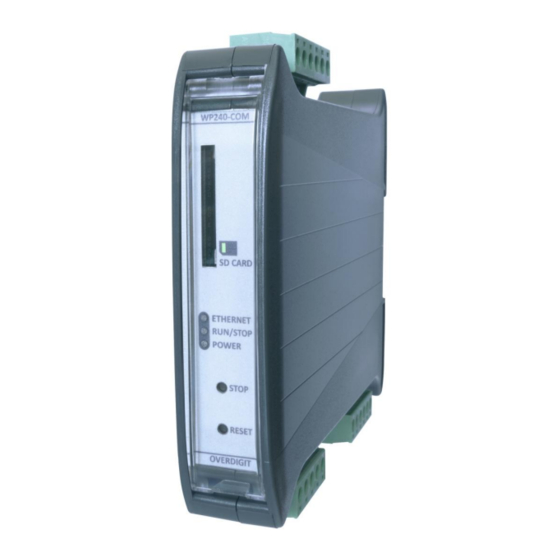
Advertisement
Advertisement
Table of Contents

Summary of Contents for ENcombi ECpvh
- Page 1 ECpvh Quick Start Guide...
- Page 2 Document change log Introduction ECweb Connecting to ECweb with Internet Explorer on PC/laptop Connecting to ECweb using any other browser or mobile device Troubleshooting Connection to ECweb established...
- Page 3 Document change log 2021-04-26 First version 2021-09-20 Updated after release 1.01.0...
- Page 4 Introduction All configuration and real time monitoring of the ECpvh is done by connecting with a standard web browser to its built in webserver (ECweb). The ECweb can run on any device featuring a web browser. Use for instance a panel PC as a local HMI on site. A laptop or portable device which will give you monitoring and control capabilities even from remote if connectivity to the ECpvh is in place.
- Page 5 ECweb ECweb is the built in webserver of the ECpvh. All configuration and real time monitoring of the ECpvh is done via ECweb. Connection to ECweb is done with a standard web browser Using a laptop/PC and Internet Explorer browser running on Java is the best option for connecting to ECweb.
- Page 6 [2;249] excluding “101” as this is used by the ECpvh itself. 3. Once the IP of your laptop is in place you must be able to ping the ECpvh. This can be done by opening a command prompt and writing the command “ping xxx.yyy.zzz.www”...
- Page 7 In the upper right corner you can see the current access login level. Find more information about this in chapter revolving password scheme. In the lower left corner ECpvh will display any info and warning messages it wants to communicate to the user. Some messages will clear themselves automatically. Others demand user action to be acknowledged first.
- Page 8 3. “Monitoring” provides a high level overview of the installation as well as detailed information about each individual inverter and power meter. 4. “Control” gives access to set up of ECpvh controller related parameters such as IP configuration, Internal clock handling etc.

Need help?
Do you have a question about the ECpvh and is the answer not in the manual?
Questions and answers